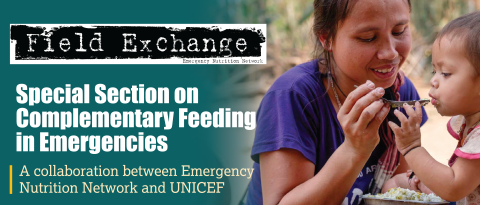Severe Wasting: An overlooked child survival emergency
This is a summary of the following report: UNICEF (2022) Child alert: Severe wasting. https://www.unicef.org/child-alert/severe-wasting
In May 2022, UNICEF issued a Child Alert entitled ‘Severe wasting: An overlooked child survival emergency.’ The brief highlights that due to climate crises, conflicts and economic shocks, including the ongoing fallout from the COVID-19 pandemic, even in fairly stable countries, child wasting has risen by more than 40%. The number of severely wasted children in need of treatment remains nearly as high as it was in 2015, with wasting mostly concentrated among the youngest children in the most underserved areas, both rural and urban. The availability of treatment remains predominantly in emergency contexts, despite three quarters of children suffering from severe wasting living in non-emergency contexts, e.g., in India and Indonesia.
The report calls for countries to include ready to use therapeutic food (RUTF) in their essential medicines and commodities lists and to better integrate wasting treatment into routine services. It highlights the need for flexible funding to ensure a continued RUTF pipeline given that the average price per RUTF carton is projected to increase by up to 16% over the next six months. A scaling up of community screening approaches using the measurement of mid-upper-arm circumference, ‘Family-MUAC’, is emphasised to promote the early detection of child wasting to prevent more severe illness and death.
The report recognises that aid for wasting remains woefully low and the current aid landscape for wasting is unsustainable. Most funding for wasting comes from just a few donors and is increasingly provided as humanitarian aid which is generally shorter-term, less predictable and less focused on strengthening national systems. Reaching almost every child in need, the Child Alert estimates, can be achieved with just US$300 million in additional funding – just 0.1% of total Official Development Assistance spent in a year. Furthermore, targeting resources to those at highest risk, severely wasted children less than two years of age, will save more lives.
UNICEF notes the urgency of additional funding with conflict and climate shocks increasing severe wasting where the risk of child mortality is already highest. It notes crises in the Horn of Africa, in particular Somalia where only 20% of funding needs are currently met, West and Central Africa, where acute funding shortages for RUTF supplies could place the lives of 900,000 children at risk in 2022, and South Asia, where intergenerational transmission of severe wasting is stubbornly prevalent. Additional countries spotlighted in the report include Afghanistan where a record 1.1 million children are projected to need treatment for severe wasting this year, South Sudan where at least 8,700 people are facing catastrophic levels of acute food insecurity, and Southern Madagascar where an estimated half a million children are wasted.
The report concludes with calling for:
- Donors to fully fund the Global Action Plan to scale up child wasting prevention and treatment on a massive scale and provide multi-year funding through both humanitarian and development funding streams.
- Governments to integrate programmes for child wasting as a central priority in national primary health care services.
- All stakeholders to prioritise the early prevention and treatment of child wasting as an essential child survival intervention, prioritising resources for children under two years of age in particular.


